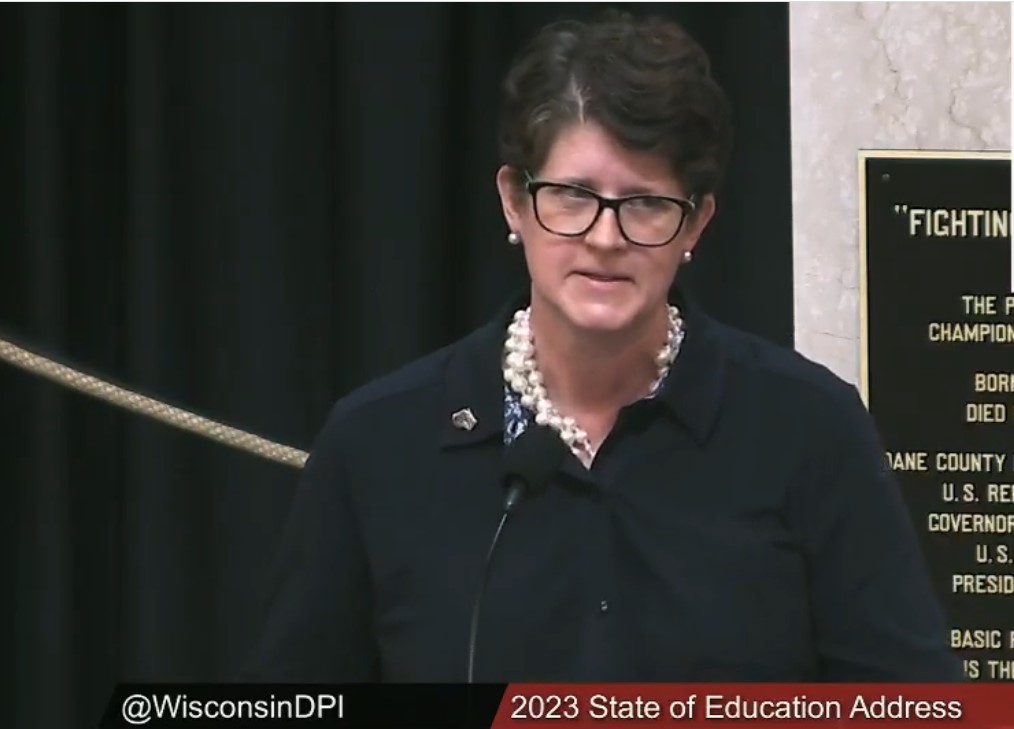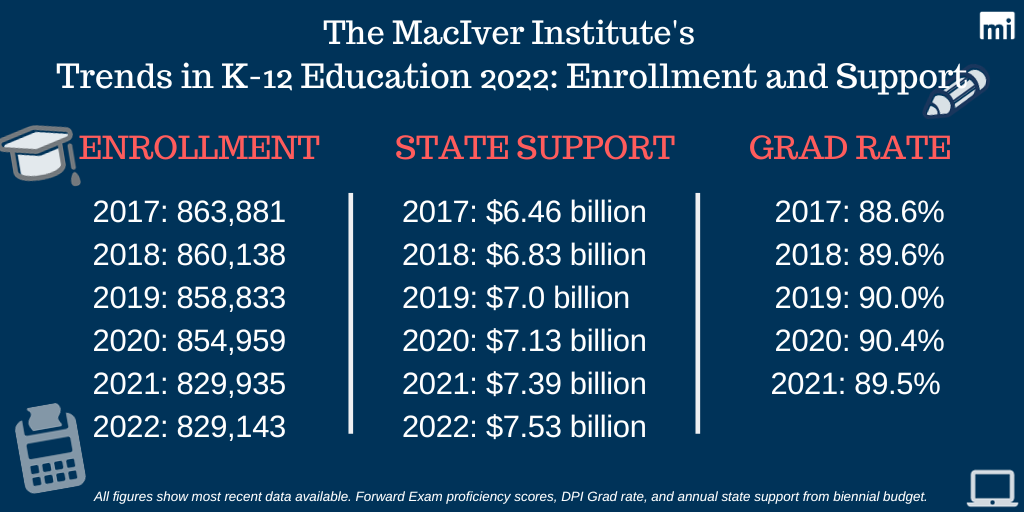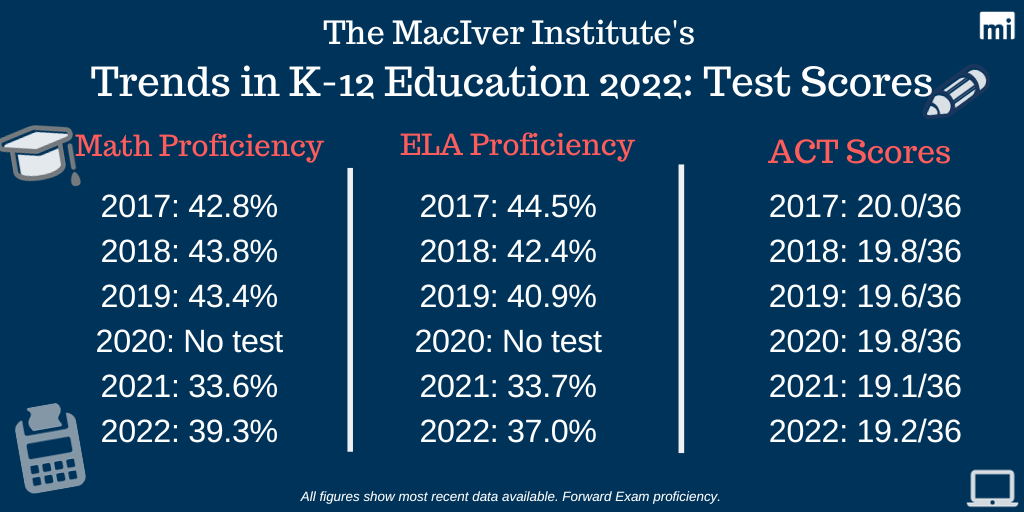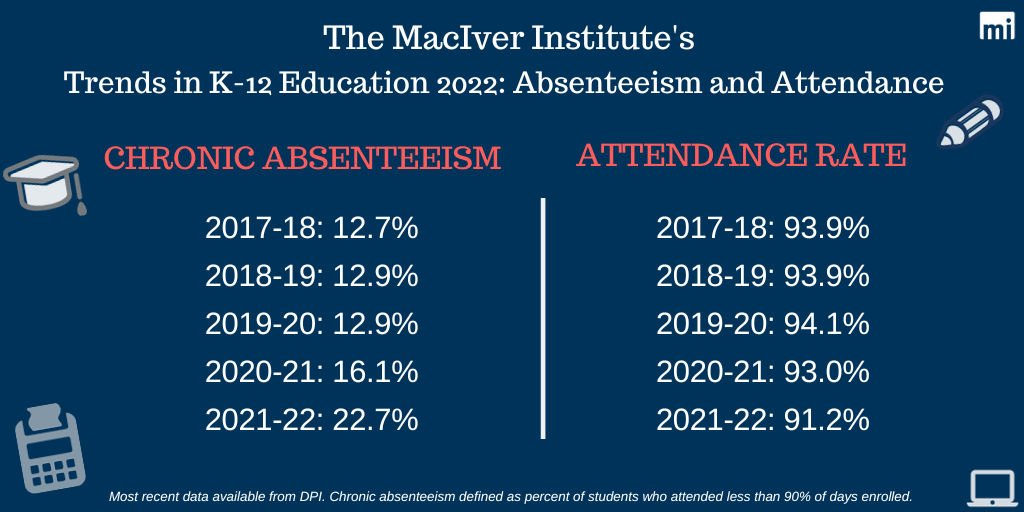
60% of Wisconsin students perform below grade level in Math and English.
DPI Superintendent Underly’s yearly address waxes poetic about a “beautiful mess.”
Wisconsin’s Superintendent of Public Instruction delivers a State of Education Address every year in September, not long after the school year has begun. It’s meant to serve as the rough equivalent to a statewide parent-teacher conference, letting taxpayers and parents in the state know how well the public schools are doing their job providing a sound, basic education of kids across the state, but it falls far short of that mark. It’s often more puff than substance, and in recent years, there’s been no effort to meaningfully measure the state of education, or to quantify – in any way – successes or failures.
Underly’s 2023 State of Education Address is perhaps most notable for what she did not mention:
Parents. Moms. Dads. Families. English. Math. STEM. Jobs. Careers. Absenteeism. Graduation. Report cards. Achievement. Proficiency. Accountability. Failing schools.
Since she didn’t cover any of those things, let’s look at what the most recent “science” says about Wisconsin’s K12 schools, using facts, figures and data. The basics.
(The new test data won’t be out until November, so this is the most recent available.)
The State of Education: What Underly Didn’t Mention
First let’s look at the trend in enrollment and support – the number of kids attending, state dollars invested, and graduation rate. The chart below shows the reason we have been ringing alarm bells for years. Enrollment is dropping, state aid is increasing, and the graduation rate is hovering around the 90% mark.
State of Enrollment and Support: Schools are doing less with more.

State taxpayers have put in over a billion dollars more in the past 5 years, about a 17% increase. There are about 4% fewer students enrolled. And still, one in 10 students who start kindergarten at the same time as your child won’t be graduating with them. The just-passed state budget gave schools another boost in funding, and September 2023 enrollment numbers just in show another decline.
Next, let’s look at how well students are performing. The Wisconsin Supreme Court has said that students are constitutionally entitled to access to a sound, basic education.
State of Soundness in Basic Courses: Abysmal.

Proficiency measures the ability to perform at or above grade level. About 60% of students cannot do work at their own grade level in basic courses like Math and English. ACT scores are nearly a point lower than 2017. And as noted above, that’s with more state funding, and fewer students in classrooms.
The State of Education in Wisconsin is not just on the wrong track, it’s off the rails.
Underly’s State of Education Address
An honest assessment of the state of education in Wisconsin would acknowledge the problems, propose solutions, and demonstrate authentic willingness to find solutions – even if those solutions don’t fit into a particular partisan worldview and even if it means admitting failures.
Anyone who expected that kind of leadership from the DPI Superintendent was disappointed. The speech consisted mostly of multiple restatements of rather threadbare platitudes like ‘children are our future’ and ‘hope and change.’
Let’s look at what Underly found important enough to mention in the address.
Underly: “And the beautiful mess inherent in change…”
While she never mentioned having concerns about schools fulfilling their mission of providing a sound basic education, she seemed to hint she knows all is not well, as a recurring theme of the speech was the messiness that demonstrates that change and transformation is happening.
Underly mentions that we’re in a mess 27 times. She doesn’t define the mess, other than to say mess is evidence of progress. Progress toward what? She never says.
But she casts the undefined education mess in terms of hate, war, violence, battles, destruction, casualties, and collateral damage because of those who fear and fight change. Who, and what change? She doesn’t clearly specify but it seems related to “culture wars” and “safety” suggesting she thinks the mess is that some people (maybe even parents) don’t support the education establishment’s political agenda.
Underly: “Also, it bears remembering that safety is a requisite for every kid and creating safety for LGBTQ+ kids is not controversial. It is the bare minimum.”
In Underly’s world, the education establishment prioritizes the “safety” of some students over the safety of other students.
Consider the situation in Sun Prairie where the school, to make things “safe” for a 18-year-old male student who said he was trans to shower with freshmen girls. The girls’ families filed a complaint against the school to try to protect the safety of their girls.
And in Green Bay, girls have had to choose between their safety or participating in sports after they were sustaining bruises and welts playing sports with biological male students.
Parents having to sue their schools to protect the physical safety of their children should be controversial. But that presupposes that you believe parents should have a say in what happens with their child when they’re at school, and what they’re taught.
Underly: “Because every kid in this state is “our kid” and we need to make sure all kids are accepted and safe.”
Again, Underly never mentioned parents in her speech. The education establishment has unabashedly adopted the belief not just that it takes a village to raise a child, but that every child belongs to the village. And belongs most of all to the government collective.
This is why a parents’ bill of rights is not the law of the land. It’s why schools are fighting to cut parents off from information about their child’s education, health, and well-being. It’s why hyper-sexualization of children in school is being normalized, as is allowing them to move from grade to grade to graduation unable to read or do math at grade level.
Tellingly, when it came to her own kids, Underly chose a private religious school instead of Madison public schools which are leaders in ignoring parents. But she’s been consistently dismissive of other parents’ choices and their input about curriculum, particularly when it comes to widespread objection to teaching students that the color of their skin dictates the content of their character. Which is the norm in CRT-based social emotional learning curriculum which Underly praises.
Underly: “Our children’s communities – their classrooms – are also some of the most inclusive and equitable places in our state…. despite the push from some leaders to try and homogenize learning in a way that is just not reflective of historical or current reality, nor of a child’s lived experience. It is also thanks to intentional community-building and social emotional learning in our classrooms that creates a deep understanding of educational equity among our students…affirming that the lives of our Black, Indigenous and students of color matter is not political. It’s a statement of fact.”
We’ve covered extensively how public schools have based curricula and teacher training in CRT principles, which requires white students be taught (and all white teachers accept) that they are inherently racist and responsible for historical actions of people who share their skin color.
Underly and the education establishment have doubled down on this approach, and teaching the message from the 1619 Project and Black Lives Matter that the US is founded on the concept of slavery, not freedom.
Underly: “Because of all this – diversity, equity and inclusion in our schools – all of it makes it possible for our kids to thrive academically and personally.”
Except they’re not thriving academically. At all.
As we mentioned – and Underly did not – more than 60% of students cannot do Math or English at their grade level. That’s not academically thriving by any definition.
When asked to provide the number of employees focused on diversity, equity and inclusion (DEI), DPI provided a list of their total position authority – 654 employees, saying every single DPI employee is focused on DEI as “the most important work we do at DPI.” And yet – though Underly says DEI what makes kids thrive academically – performance seems to be diminishing since the days before they had every employee focused on DEI instead of the anything related to the opportunity for a sound, basic education.
Underly said she asked students on her Youth Council what changes they wanted to see in schools. For anyone who thinks teachers don’t indoctrinate kids with their political beliefs, the answers should be illuminating. According to Underly these are the top concerns students have:
- They believe the state school funding mechanism is inequitable.
- They are deeply concerned about measuring achievement through standardized tests.
- They want schools to be safe for exploration, with a school culture set by district and school leaders (not parents).
- They want teachers to use innovative teaching practices.
- They don’t want books banned.
Sound anything like the liberal talking points put out by the teachers union?
Underly: “They really want adults to stop banning books.”
Until recently, the concept that some things are inappropriate for children was widely accepted, even by educators.
After all, there are parental controls for media, warnings about content in video games and on television shows, ratings for movies. Schools must use internet filtering software to receive E-Rate funds from the federal government. These widely accepted limitations demonstrate adults concerned about potential harm extreme violence, explicit sexual content, and “adult themes” might cause kids who lack the maturity and context to understand and process.
Once upon a time, the lack of books on school library shelves with graphic illustrations of sex acts wasn’t “book banning” but age-appropriate content curation.
Studies (“the science”) show that exposure to sexually explicit media in early adolescence is strongly related to risky sexual behavior. The National Coalition to Prevent Child Sexual Abuse and Exploitation says that exposure to sexually explicit material can cause adolescents to normalize sexual abuse done to them. Adolescent girls exposed to explicit sexual material are particularly impacted and it puts them at increased risk of becoming victims of sexual predation and violence.
The American Psychological Association Taskforce on the Sexualization of Girls sounded alarm bells about substantial negative impact on girls caused by pervasive, early sexualization of girls in the U.S. They stress the importance of parents and family helping young girls think critically about the messages they see. They suggest policy initiatives that include schools helping combat sexualization and objectification.
These are hardly recommendations from right-wing, book-banning zealots.
Educators like Jill Underly are not on board with the science behind the wisdom of protecting children from sexualization. They want to celebrate the sexualization of kids, not combat it.
Oconomowoc schools threatened to sue a parent who spoke out against age-inappropriate books made available on school computers. As we covered, one Waukesha School Board member chided a parent who began to read aloud from a sexually graphic book at a school board meeting, and then the board time-limited parents as they read aloud short portions from multiple books, available to kids as young as 11, featuring rape, sexual aggression, and other extremely explicit sexual content.
At the same time as educators are fighting to keep graphic comic book illustrations of sex in front of kids, the woke left has been engaging in censorship for years, banning words and rewriting books.
Multiple Dr. Seuss books have been banned by the left. Scholastic Books, the world’s largest publisher of children’s books, whose catalogs have been ubiquitous in schools, recently admitted they made more than 100 changes to the wildly popular R.L. Stine’s Goosebump series. Scholastic which celebrates Banned Books Week by putting out a list of banned books and urging opposition to censorship to preserve our First Amendment rights, said they censored the works (and others) to protect student mental health.
Among the changes? A character was changed from being described as “plump” to being “cheerful.”
Got that?
A graphic illustration of oral sex = Student access is vital.
The word plump = Damaging to a student’s mental health.
Recently, Randi Weingarten, the leader of the American Federation of Teachers was forced to admit she widely shared a phony list of banned books. Her response was “my bad.” This is the playbook from the education establishment: Create a false narrative that the books being banned are harmless, time-honored classics, to pivot away from scrutiny of the sexually explicit material they simply must have in school libraries – material that any parent can seek at the local public library or choose to purchase for their child if they feel it’s important and appropriate.
Underly: “…one student said, “learning how to express myself through writing was an emotional outlet that kept me from hurting myself.”
Underly evokes the emotion but ignores the message.
This middle-schooler is articulating one of myriad reasons that delivering a sound, basic education, in which reading and writing is foundational, matters.
It was a perfect opportunity to pledge to improve our terrible English proficiency scores; Underly didn’t take it.
The Kids Are Not In School
Finally, we mentioned that attendance and absenteeism were not mentioned by Underly, in spite of the fact that the DPI dashboard says attendance is a major predictor of future achievement.
Let’s look at a couple of data points there which should have alarm bells sounding. Student attendance rate is the basic measure of all possible days of attendance across all students. In the 2021-22 school year, attendance was only 91%. That’s the equivalent of missing 1 day every two weeks.
Even worse is the chronic absentee rate for the 2021-22 school year of about 23% as calculated under standards set forth under the Every Student Succeeds Act (ESSA). National figures for chromic absenteeism are not yet out, but estimates say it could be as high as 1 in 3. The education establishment is suggesting the pandemic interrupted the ‘habit’ of school attendance. Blaming the pandemic for every educational ill has become a habit, but more and more, it fails to be persuasive.

This means that we have close to a quarter of students enrolled absent more than 10% of the time.
In the past, when the absentee rate was much lower, Wisconsin has ranked in the top states for chronic absenteeism.
A report required by the 2017-19 state budget looked at chronic absenteeism and participation in welfare programs and found that students enrolled in public benefits programs were nearly 3 times as likely to be chronically absent. The more benefit programs the family was enrolled in, the higher the absentee rate. More than 40% of children who were enrolled in Medicaid, FoodShare, W2 and Wisconsin Shares were chronically absent.
These children from disadvantaged backgrounds are being failed by adults – DPI, parents, schools, policymakers – who are not shining a light on this problem and doing whatever is necessary to get those kids in seats in classrooms, every day. How could this not even merit a mention in the DPI Superintendent’s yearly address?
Of all the important topics that Underly didn’t give a place in her speech – achievement, absenteeism, accountability – ignoring parents is perhaps the most egregious. She worked in two mentions of the rainforest, 8 of caterpillars, but not one mention of a mom, a dad, or a family. The most important people in a child’s life simply aren’t valued by the education establishment. That was made clear as Underly spoke about the mess she sees in education, painting those who oppose change in terms of hate, war, violence, casualties and destruction.
Underly believes educators know what’s best for kids, and everyone else should just send money, turn over their kids, and butt out.
While Underly’s speech did little to shine a light on the problems in our schools, the data is there for all to see. The state of education is dire, and there’s no time to waste getting it back on the right track.